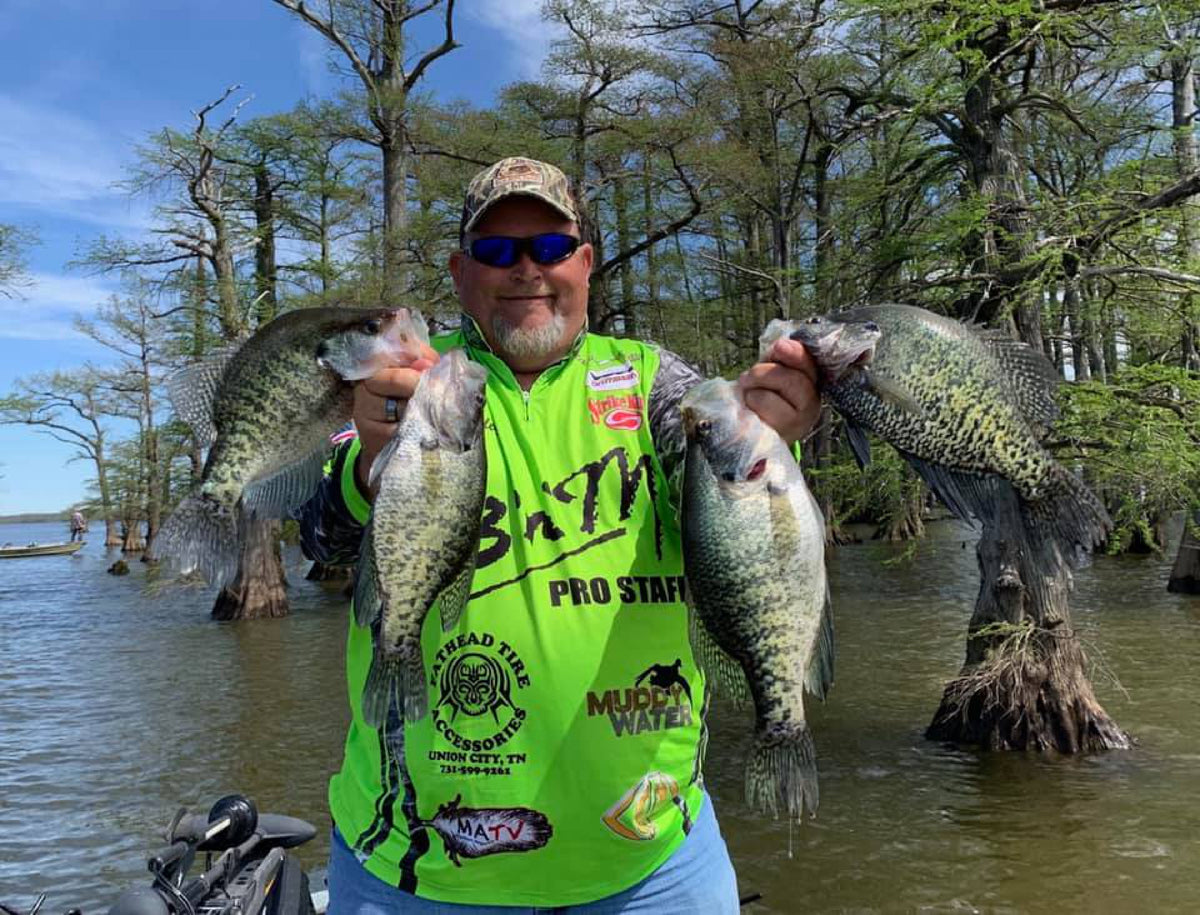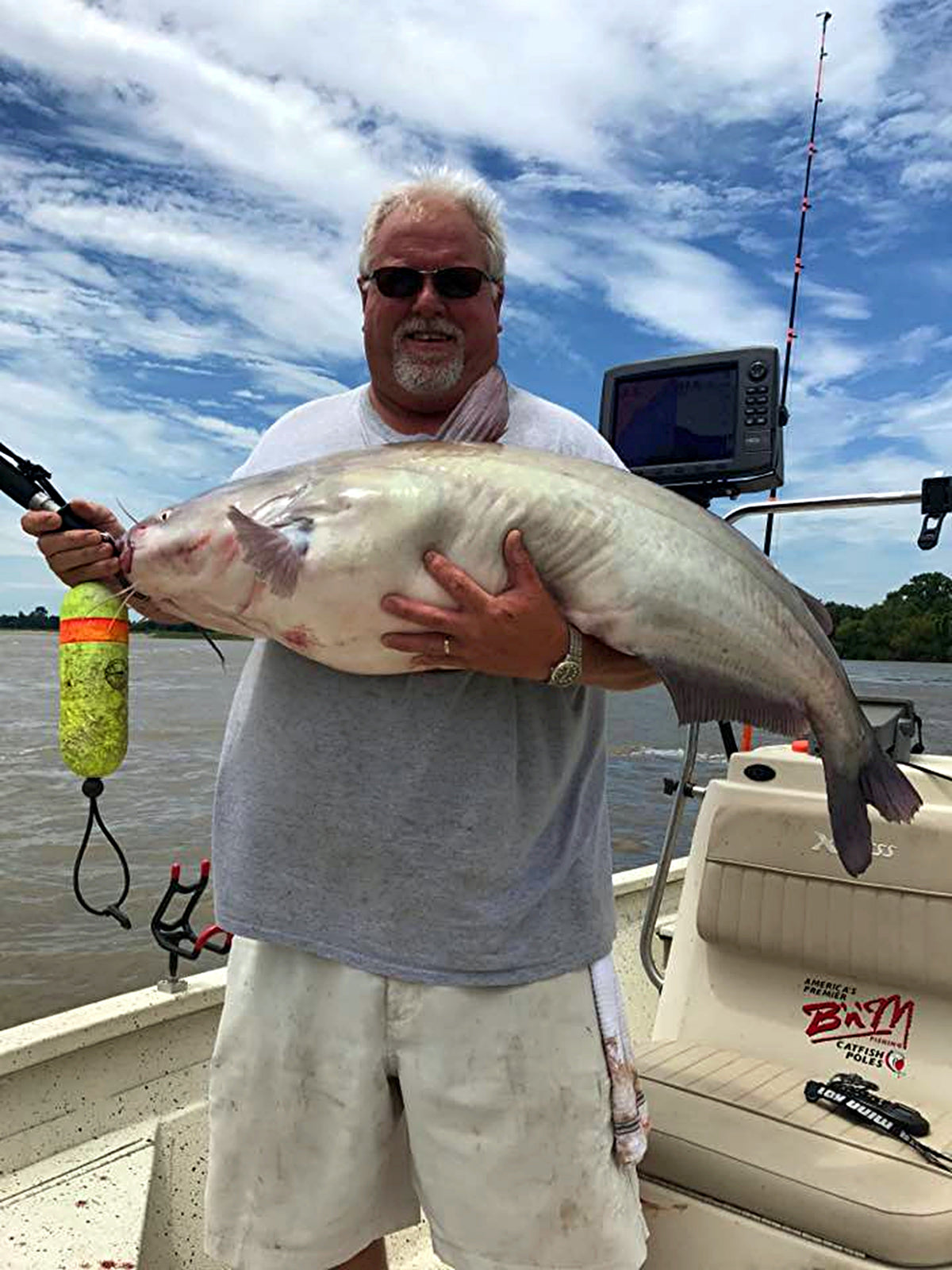Kent Driscoll On Using the Garmin Panoptix Live Scope to Catch Crappie - Part 2
Kent Driscoll On Using the Garmin Panoptix Live Scope to Catch Crappie - Part 2
By Phillip Gentry
Last time, B’n’M pro staffer Kent Driscoll described why the Garmin Panoptix Live Scope has become a must-have item on the crappie angler’s boat. He described what he has been able to see with his Garmin 1042 XSV 10-inch unit but he didn’t discuss what tactics he’s found to be the most effective given the new set of fishing information he’s obtained from his sonar unit.
This week, we remedy that.
“One of the things that really stood out to me when these Garmin units started showing up on tournament angler’s boats is that single pole anglers started winning tournaments,” said Driscoll. “That doesn’t mean there’s not a tremendous advantage to using one if you troll using multiple rods, but with these units you can cast a line out and watch a crappie come up to the bait off a brush pile, and you’re catching that fish.”
Once a school of fish is located, Driscoll employs the Spot-Lock feature on his trolling motor to hold the boat in place, then pitches the slip cork rig past the structure and slowly eases it up to the fish.
Driscoll said it took him a little bit of fine tuning to figure out the best way to approach crappie he was marking on his unit. The sonar distance on the Garmin can be adjusted further out or closer in. Driscoll said when he’s scanning an area, he sets the distance at 40 – 50 feet, what he considers search mode. Once he marks fish on the graph, he will pull in to 22- 26 feet for fishing.
“One of my challenges is my home lake is at Percy Priest in Tennessee and it’s a clear water lake,” he said. “We always knew clear water fish were spooky but never how much until I started using this unit.”
The 26-foot distance is a cast length. To get there while maintaining his distance from the fish and structure, he rigs a slip cork on a B’n’M 11-foot Duck Commander Double Touch pole with 6-pound test clear Gamma fishing line. He said most of the time the bait of choice is a live minnow. It’s hooked on a #1 Aberdeen hook and the rig is buoyed with 1/8-ounce egg sinker about 14 inches above the hook.

Pitching the rig is done with one of B’n’M’s Duck Commander 11-foot Double Touch Jig Poles.
“I can see the structure on the scope and I can see the fish, I can even see which way he’s facing, so I pitch the slip cork out past the fish and slowly bring it into view,” he said.
Driscoll sad the beauty of the slip cork is he can keep the minnow right there at whatever level he’s marking fish and the bead stop easily reels up through the top guide when he’s reeling a fish in. Most of the time fish will be right at the top of the structure at around 10 – 12 feet but some days he can see the fish are in a neutral or even negative mood because they’ll be down in the brush, even facing into it rather than out.
“I put it right there, right in his face and just leave it,” said Driscoll. If fish are down in the brush, I’ll set the cork deeper and pull it right up to the edge of the brush. Usually, they’ll come check it out, even if they’re not actively feeding.”
The pro said it might seem like a lot of work to target just one fish, but he pointed out there were days on the tournament trail when the fishing is tough and just bringing 7 decent fish to the scales means drawing a check.

Driscoll’s slip cork rig consists of the slip cork, a #1 Aberdeen hook, a 1/8-ounce egg sinker and a tiny bobber stop to adjust the depth of the bait.
“The good days are when you’re picking out the bigger active fish because they tend to come out and bit first. You might see 2 or 3 good fish in a spot and once you’ve caught those fish, it’s time to go somewhere else,” he said. “We never did that with other units because you see fish on the graph, but you can’t tell how big they are.”
When he’s using multiple poles, usually tight lining off the front of the boat, he points the transducer at each rod individually or possibly two baits if they are close enough together, the transducer cone is around 20 degrees so it’s a little bit of tunnel vision when trolling 8 rods.
“What really stands out when you’re trolling is you can see fish come up and check out the bait,” he said. “I’ve seen them pas on a plastic jig and then take it when I switched over to a hair jig or tipped it with a minnow.”
Finally, Driscoll said he has much more to learn.
“There are so many different situations that I haven’t seen yet,” he said. “Each day is a new learning experience. You just gotta get out there and go fishing.”
At B’n’M, we’re all about fishing. Visit our website at bnmpoles.com to find out more.
Also in Weekly Tips and Techniques

North Texas Fall Crappie Fishing with Brian Carter
Texas crappie pro-staffer Brian Carter loves to pitch jigs at standing timber during the fall of the year.

Summer Crappie Fishing with Billy Blakley
B’n’M pro-staffer Billy Blakley claims the copious amount of rainfall so far this year has created some great summer crappie fishing on Reelfoot Lake.

Search Tactics for Summer Catfish – Part 2
Catfish guide David Magness said his favorite search technique for slack water fishing is to troll drift rigs behind planer boards.

